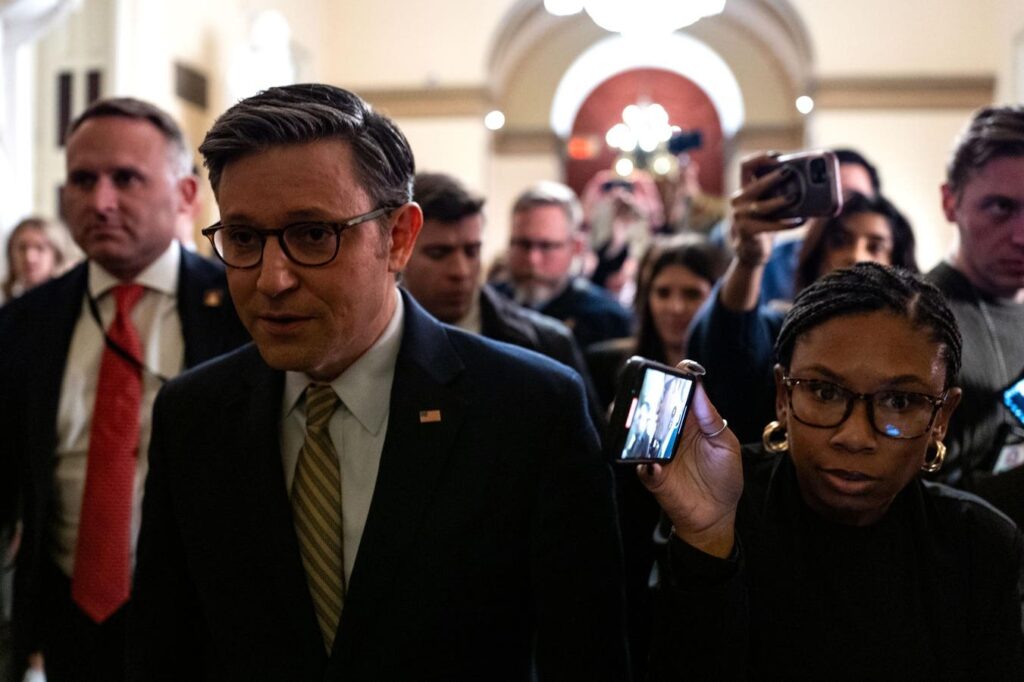On December 20, 2024, a major legislative move occurred in Washington, D.C., as the House of Representatives approved a stopgap funding bill aimed at preventing a government shutdown. This bill extends federal funding into mid-March and includes essential disaster relief provisions. However, it notably omits the debt ceiling suspension that President-elect Donald J. Trump had sought, largely due to resistance from within the Republican ranks. The approval of this bill came amidst ongoing discussions about budgetary responsibilities, underscoring the paradox of attempting to stabilize government function while grappling with political disagreements around funding and fiscal policies.
The recurring threat of government shutdowns has become a hallmark of American political discourse, with 21 such shutdowns recorded since 1976, as noted by USA Today. These shutdowns have exhibited a broad range of durations, from mere hours to as long as 35 days, with the latter occurring during Donald Trump’s presidency and costing the nation approximately $3 billion. Advocates of the strategy argue that shutting down the government can be an effective way to compel Congress to reach a consensus about budgeting and spending. However, this tactic has often revealed the dysfunctional underpinnings of the legislative process, which fundamentally revolves around financial oversight and the equitable management of taxpayer funds.
In recent discussions, experts emphasized the negative economic impacts of government shutdowns, with EY Chief Economist Greg Daco highlighting that a shutdown could detract roughly a tenth of a percent from the Gross Domestic Product (GDP), translating to a staggering $6 billion per week. When the government shuts down, numerous federal agencies implement their contingency plans, defining which personnel remain on duty and which functions close indefinitely. While benefits for programs like Social Security and Medicare continue unabated during a shutdown, other critical services grind to a halt, leading to significant delays and disruptions across various sectors.
The repercussions of a government shutdown ripple throughout the economy and society at large. Many federally-operated attractions, such as national parks, museums, and monuments, close their doors, obstructing recreational and educational opportunities for citizens. Although federal courts can maintain operations temporarily, they too face eventual stasis. Furthermore, critical public health functions, like food safety inspections orchestrated by the FDA, may be delayed, raising potential risks for public health and safety. In the realms of scientific research and small business support, the shutdown can impede operations, as agencies like NASA and the Small Business Administration reduce their workforce and halt loan disbursements.
One of the more insidious facets of a government shutdown is how it can subtly undermine economic stability. Agencies responsible for economic data collection, such as the Bureau of Labor Statistics and the Bureau of Economic Analysis, are forced to cease their activities. This temporary halt can disrupt the flow of vital information, complicating business planning and decision-making processes. Important economic indicators that guide the Federal Reserve in setting interest rates could also become unavailable, leaving policymakers adrift in an already volatile economic environment. Programs that offer critical nutritional and child support services, such as SNAP and WIC, can sustain operations only as long as they have available budgets, creating a precarious situation for low-income families reliant on these benefits.
Fortunately, the latest legislative agreement has averted the immediate consequences associated with a government shutdown. Yet, the previous near-collapse of budget discussions hints at the recurring threat of fiscal impasse in Congress. The persistent cycle of budgetary conflicts threatens to disrupt essential governmental operations and services. This situation is particularly detrimental to economically vulnerable individuals who rely on federal support and lack the means to simply wait for governance to stabilize. The landscape of budgeting and appropriations in Congress remains fraught with challenges, affirming that without comprehensive reform and collaboration, the cycle of fiscal chaos will likely continue to hamper the government’s ability to serve its constituents effectively.

